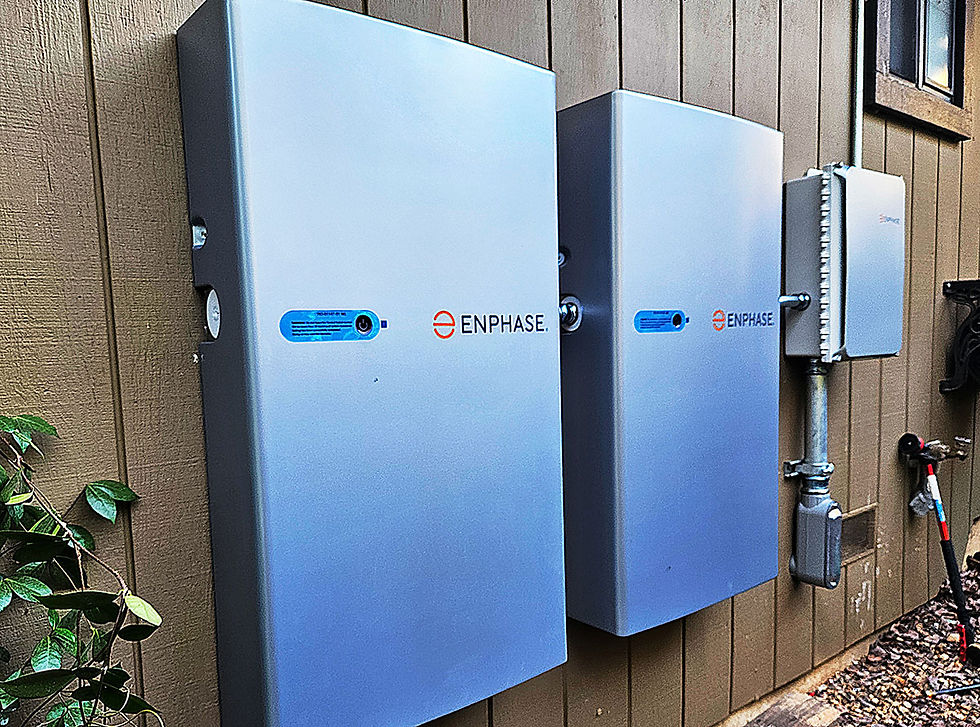Should I get PG&E Utility Service To My New Property, Or Go Off-Grid With Solar?
- Diamond Solar Solutions

- Feb 6
- 3 min read
Did you finally buy the property to build your dream home? Have you looked into powering the property? The utility plan and costs are a major factor when planning out your new home build. You may find that having PG&E provide grid power is cost prohibitive. However, you are not out of luck. Building an off-grid home with solar, battery storage, and generator back-up may be the more cost effective, and reliable option. Read the latest article from Diamond Solar Solutions to learn more.
When deciding whether to opt for traditional grid service from PG&E or to invest in off-grid solar, battery, and generator solutions, several factors should be considered:

Paying PG&E for Service:
Convenience and Reliability: With PG&E, you get the ease of having a
reliable, established power grid. The utility handles maintenance, power outages, and upgrades.
Cost Structure: While PG&E rates in California are among the highest in the U.S., they are regulated, and you might benefit from programs like Net Energy Metering (NEM), although under NEM 3.0, the financial benefits for solar have diminished.
Initial Cost: Lower upfront costs since you mostly pay for connection fees rather than a large system installation. This can vary greatly depending on your property location. It is not uncommon for PG&E service to cost hundreds of thousands of dollars for remote access properties, plus long-term costs for monthly energy bills.
Scalability: If your energy needs grow, you can simply increase your usage without the need for additional personal investment in hardware.
Off-Grid Solar, Battery, and Generator Solutions:

Energy Independence: You become self-sufficient, lessening reliance on utility companies, which can be particularly appealing in areas prone to power outages or where extending utility lines is prohibitively expensive.
Long-Term Savings: Although the initial investment can be high, over time, you will save money, especially with rising utility costs. Solar panels can last 30+ years, batteries typically 15-20 years, and generators can be used for decades with proper maintenance.
Environmental Impact: Using renewable solar energy reduces your carbon footprint significantly.
System Costs: Off-Grid solar/battery/Generator systems are becoming more economical than in the past. They may even be cheaper to install than what PG&E quotes to bring power to your property. Not to mention long-term savings with no monthly utility bill.
Installation and Maintenance: The homeowner is responsible for hiring a professional to help with system design, installation, maintenance, and potential upgrades. This may be an additional responsibility for the property owner.
Location Considerations: If your property is remote or in an area where grid expansion is costly, off-grid might be more economical. Conversely, in urban or well-serviced areas, the cost-effectiveness might be less clear-cut.
Decision Factors:
Location: How far is your property from current utility infrastructure? Is extending utility services costly?
Energy Needs: Assess your current and future energy consumption. Off-grid systems must be sized to meet all your needs, which could mean a larger system with more production and battery storage.
Budget: What is the cost to bring PG&E infrastructure to your property, and the long-term cost of energy bills? What is the cost to install a solar/battery/Generator system?
Lifestyle and Reliability Needs: If you need guaranteed power at all times, the reliability of PG&E might not be guaranteed. With a properly designed off-grid system, the property will have power at all times, no matter the weather.
Environmental Commitment: If reducing your environmental impact is a priority, off-grid solar systems offer a significant advantage.
Potential for Property Value Increase: Solar installations can increase property value, but this might not outweigh the initial investment for everyone.
Final Thoughts
Based on new technology and considering current trends, if you have a new property, especially in a remote or high-cost connection area, an off-grid solar, battery, and generator setup might be worth the investment for long-term benefits and independence. However, if you're in an area with easy grid access and your energy needs are not exceptionally high or variable, sticking with PG&E might be more cost-effective initially. Over time, the solar option will pay for itself, usually within a 4-8 year timeframe. Each situation is unique, so a detailed cost-benefit analysis tailored to your specific circumstances is advisable. Please reach out to Diamond Solar Solutions to learn more about how Off-Grid solar, battery, and generator back-up might be a great solution for your property.




Comments